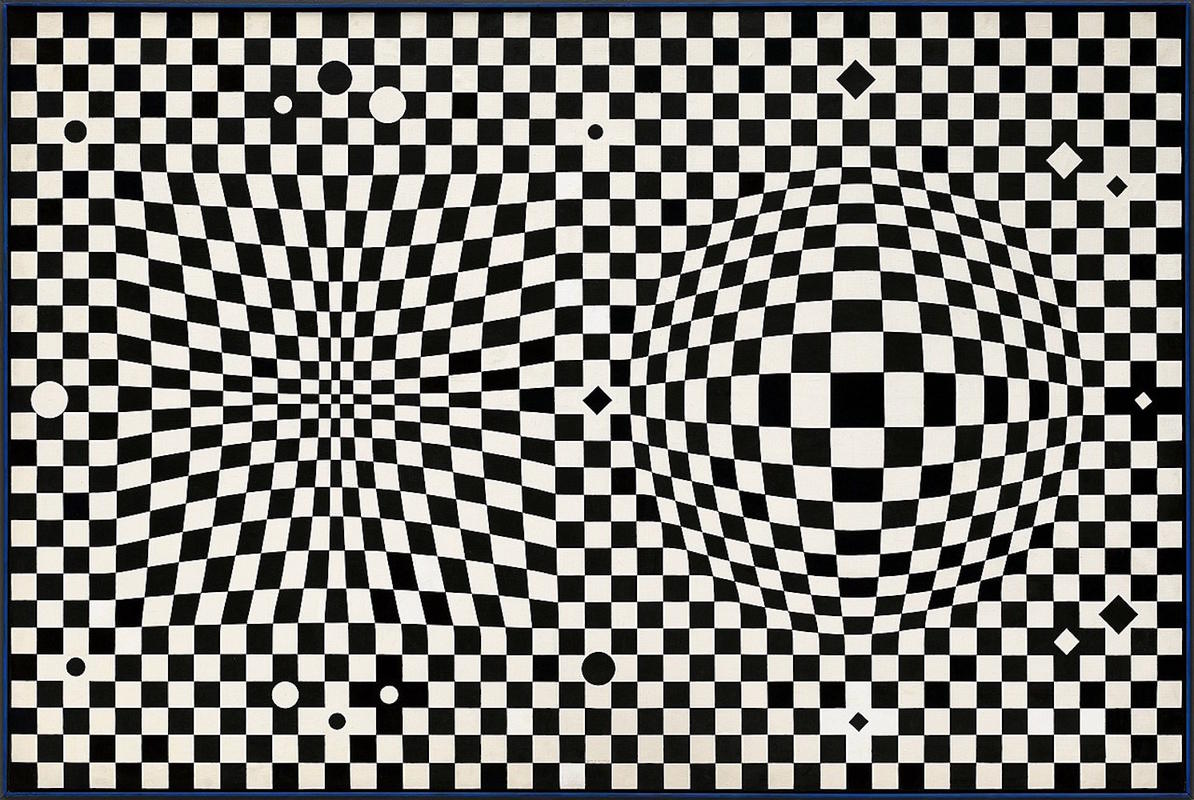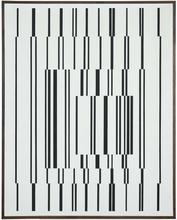Victor Vasarely’s VEGA III laid the groundwork for Op-Art by building upon the concept of Kazimir Malevich’s constructivist compositions.
If you’ve ever been to a rave or inside a frat boy’s room, you’ve probably seen some variation of Vasarely’s infamous warped checkerboard pattern. Anybody with an eye for “trippy” experiences is drawn to Vasarely because of his devotion to creating work that engages art, society, and science all at once. In order to create his pioneering Op-Art, Vasarely did extensive scientific research to determine the relationship between movement and the biology of the eye. As a result, checkerboard-like patterns with stretched, morphed surfaces dominate Vasarely’s oeuvre.
The artist claimed that contemporary painters must beautify the modern world rather than painting mimetic scenes or pictures “since people need plastic forms same as they need sunlight, oxygen or vitamins.” By “plastic,” Vasarely refers to the nature of synthetic materials which may be manipulated to take on different forms. This term also references the differentiation of visual (“plastic”) arts and other art forms such as dance, poetry, literature, theatre, etc. For this reason, Vasarely devised an Alphabet Plastique, a method of art creation in which the letters of the alphabet correlate with a color, shape, or musical note. Kinda like the concept of paint by numbers except . . . a distant cousin.
A wise man once said, “Real eyes realize real lies . . .” and another, far wiser man responded “How can mirrors be real if our eyes aren’t real?” You know who that extremely wise man was? Jaden Smith. You know who else pontificated about eyes and their relationship to space? My boy Victor Vasarely. One of the first examples of Op-Art, VEGA III and some other early works like Zebra and Harlequin solidified Vasarely’s title as the father of the Op-Art movement. His unique investigation of the convergence of art and science resulted in an art form that makes you question what is moving and what isn’t, which parts of the painting are protruding and receding. Vasarely exhibited his work at Galerie Denise Rene, which he co-founded, with other kinetic artists Marcel Duchamp and Alexander Calder. The main difference between Vasarely’s work and these other two is that Vasarely’s work didn’t need to physically move in order to be considered “kinetic” because the work still created the illusion of movement.
VEGA III in particular was inspired by the Constructivist Kazimir Malevich. Malevich’s most famous work, Suprematist Composition, is just a black square canvas. Yup. That’s it. A black square that set a world record for Russian art at auction at $60 million. Vasarely used this motif as a building block when composing VEGA III. His variation of this simplistic pattern continues to proliferate through pop culture today.


















OW MY EYES. (That jaden line had me rolling on the ground)